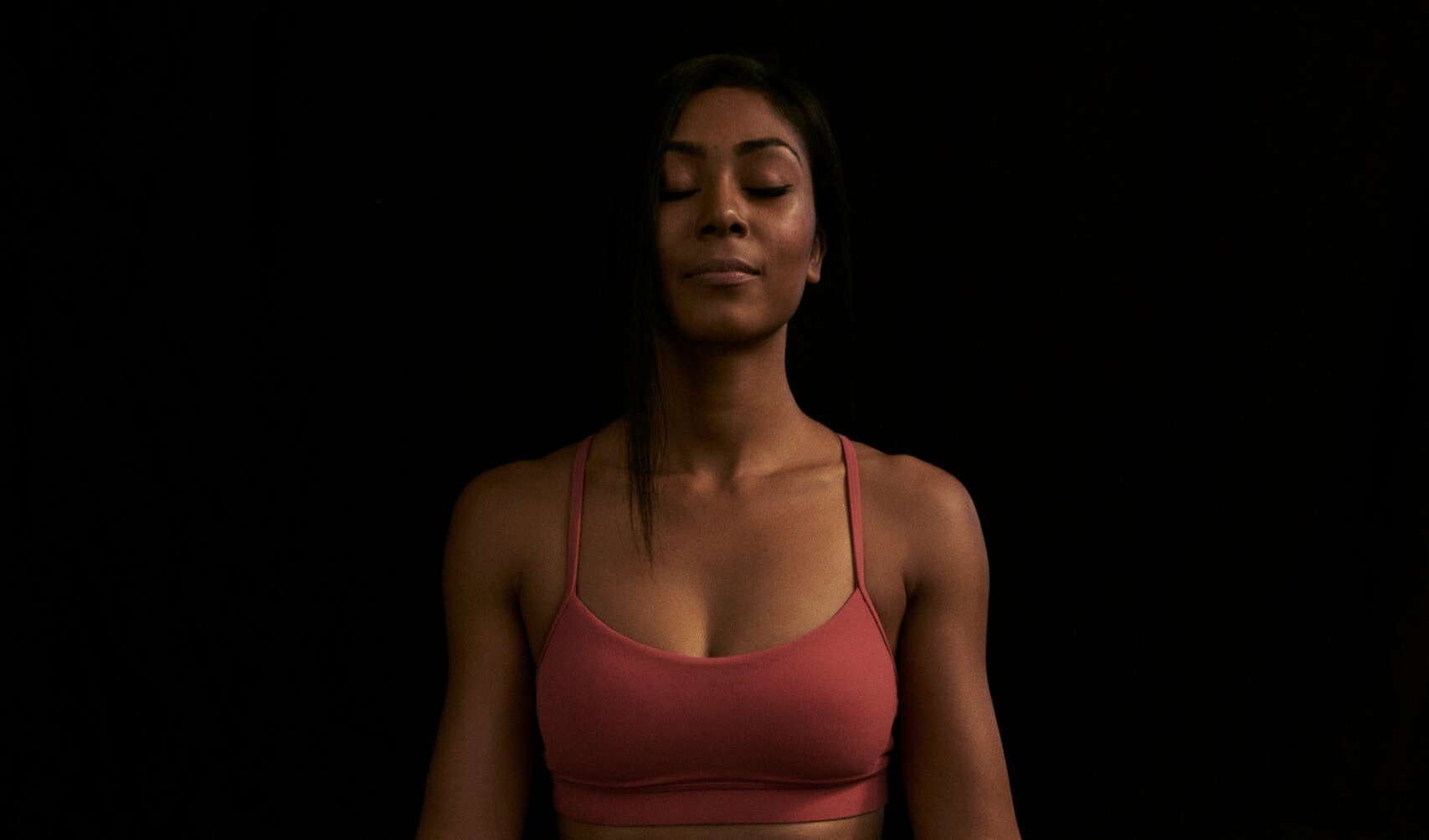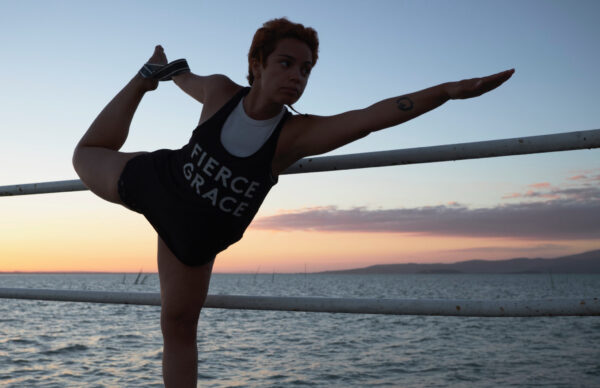Fierce Grace Teacher and Psychotherapist Kelly Garrett talks through breathing techniques that can be used to calm feelings of anxiety and relax the nervous system.
If you’ve ever experienced anxiety, then you’ll know that the physical symptoms can literally take your breath away. Increased heart rate, rapid breathing, sweating and trembling are just some of the ways that anxiety can affect your body. That’s why the ability to take control of your breath can be a powerful way to calm those anxious feelings.
The breathing done in yoga – which, as a practice, is increasingly recognised as a holistic approach to improving physical and mental health – is a good place to start. And you don’t have to have a regular yoga practice to benefit from the calming effects of yoga breathing.
Many clients coming into therapy report anxiety as their primary difficulty. Mixed anxiety and depression is the leading mental health complaint in the UK, with 7.8% of people meeting the criteria for this diagnosis. Between 4% and 10% of people in England will experience anxiety and depression in their lifetime. Interestingly, it’s estimated that 20% of people accessing yoga in any given class are experiencing anxiety.
Practitioners of integrated medicine say yoga improves physical wellbeing and mental health through its effects on ‘affect regulation’ – the person’s ability to manage their feelings, especially when under pressure. This ability is part of healthy child development. We learn to recognise and manage our feelings from a caring parent, who provides safety at times of turmoil. This, over time, becomes an internalised ability that enables us to self-soothe in response to the challenges of life.
However, if the early attachment relationship between parent and infant isn’t consistent or secure, then the ability to self-soothe is less likely to develop. We become unable to manage our feelings when under pressure – and anxiety can be our reaction to life’s stressors.
Yoga breathing can’t fix the lack of secure parenting in the past, but it can help in the present as a way to soothe your anxious responses and regulate your emotions.
Here are two yoga breathing techniques you can use to help reduce anxiety:
1. Coherent Breathing
Coherent breathing, or deep breathing, helps to calm the body through its effect on the autonomic nervous system (which controls the non-conscious bodily functions, such as breathing, heartbeat and digestion). Whether it is practised as part of yoga or meditation, or simply on its own as a relaxation strategy, coherent breathing is a simple and easy way to reduce stress and calm down when feeling anxious. Here’s how to do it…
- Focus on your natural breaths. Count the length of each inhale and exhale to obtain a baseline.
- Find a comfortable position to practise coherent breathing. Place one hand on your stomach.
- During this process, keep your hand on your stomach to make sure you’re breathing deeply from your diaphragm and not shallowly from your chest.
- Breathe in for four seconds and then out for four seconds. Do this for one minute.
- Repeat, but extend your inhales and exhales to five seconds.
- Repeat again, extending further to six seconds.
2. Ujjayi Breathing (Ocean Breath)
Ujjayi breathing is a breathing technique used in a variety of yoga practices and is sometimes called ‘the ocean breath’ because the sound it makes is similar to waves on a beach. The ocean breath can help the lungs become more efficient so more oxygen spreads throughout the body. Here’s how to do it…
- Find a comfortable position to practise ujjayi breathing.
- Focus on breathing from the diaphragm, first filling the lower belly.
- You inhale and exhale through the nose with the ocean breath, keeping both inhalation and exhalation equal.
- Allow the breath to rise to the lower rib cage.
- Finally move the breath into the upper chest and throat.
- Narrow the throat passage and the airway, the passage of air through which creates a ‘rushing’ sound.
- Your diaphragm controls the length and speed of the breath.
- Your diaphragm becomes stronger in the process.
These techniques can help bring a sense of calm and a feeling of being more in control over the things in life that are stressing you.


